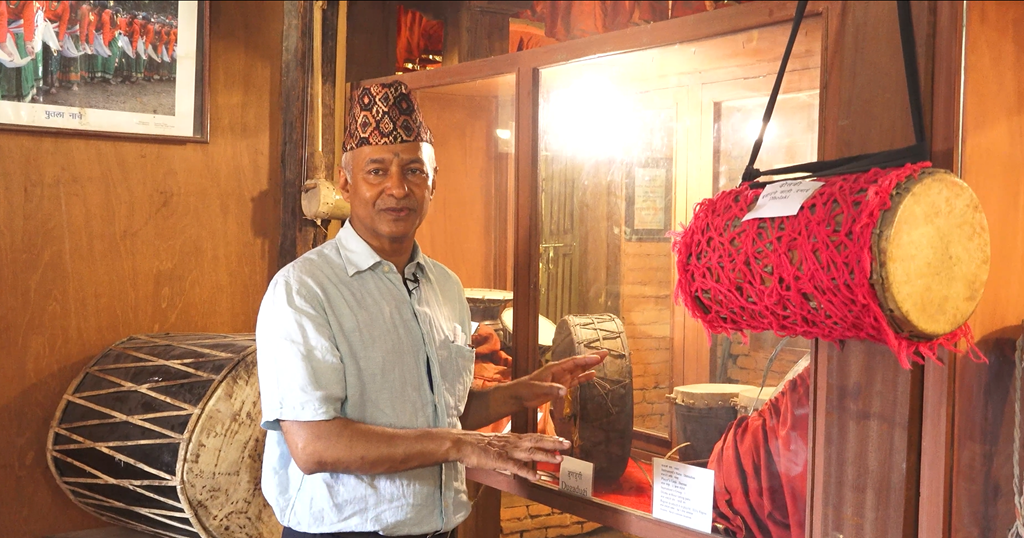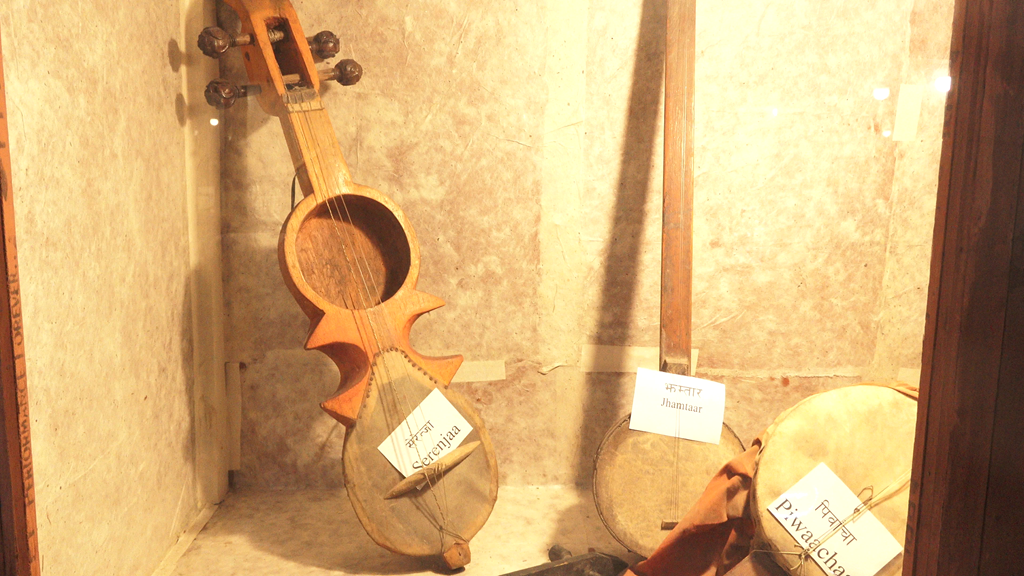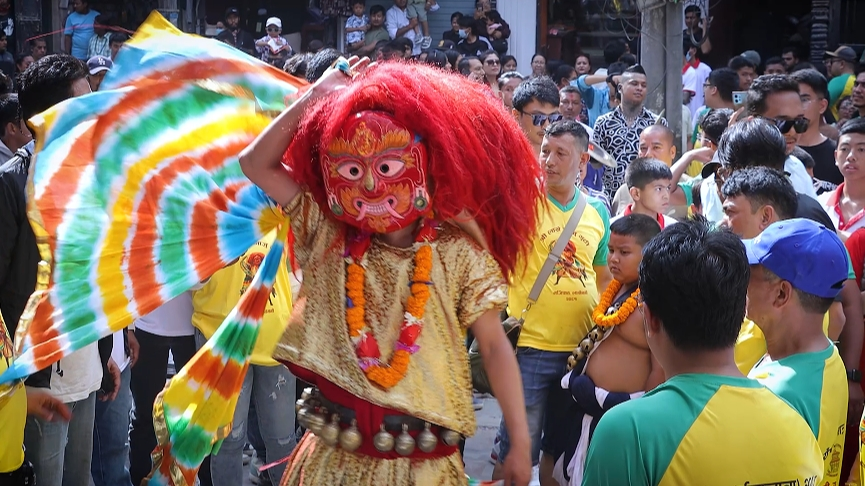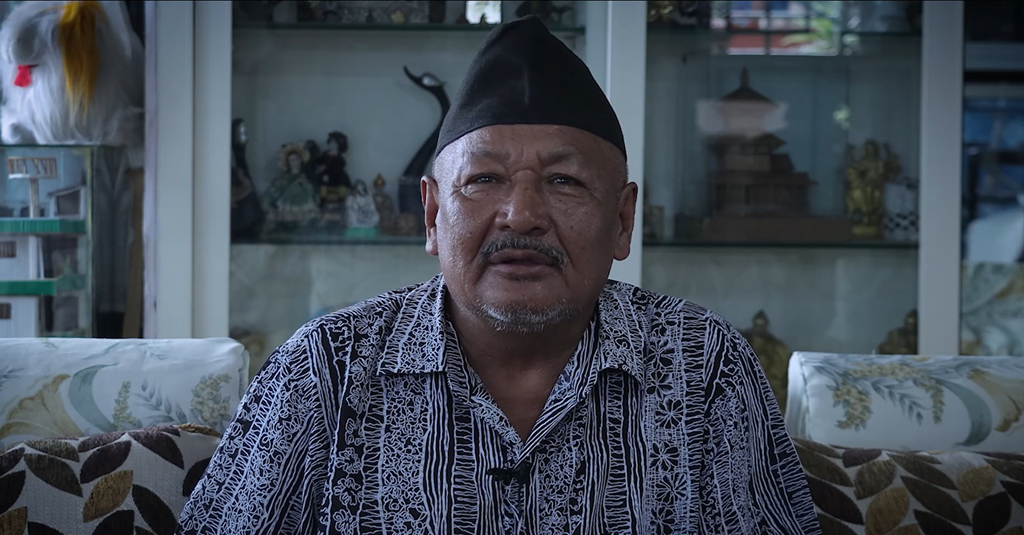Cultural guardians dedicated to revitalizing Nepalese heritages
Nepal, cradled in the Himalayas, is celebrated for its multifaceted world heritage. From the intricate artistry of traditional handicrafts to the vibrant rhythms of its music and dance, and the distinct expressions of its ethnic art, Nepal’s cultural tapestry is rich and deep. Join us in this issue as we delve into the efforts of those dedicated to revitalizing Nepal’s invaluable cultural heritage.

Ram Prasad Kandel elucidates on the instrument Dugdugi.
Preserving the “rhythm of Nepal”
By Wang Yunya and Zu Hongbing
More than just artistic expressions, traditional musical instruments are vital threads in Nepal’s cultural fabric. For three decades, the Nepali Folk Musical Instrument Museum has played a crucial role, with its dedicated staff protecting many of Nepal’s most endangered traditional instruments.
“Our museum now boasts over 650 instruments, making it the foremost of its kind in Nepal,” said Ram Prasad Kandel, a founder of the Nepali Folk Musical Instrument Museum, standing proudly before the display cases. Three decades of dedication have culminated in the museum’s success, establishing it as a leading force in preserving Nepal’s musical heritage.
Musical instruments in Nepal are deeply intertwined with cultural life, often linked to specific festivals and religious practices. The Nepali Folk Musical Instrument Museum safeguards many of these instruments, used in worship or during traditional events and celebrations, each imbued with unique cultural meaning. Ram Prasad Kandel elucidated this, describing instruments like the Dugdugi, a Tharu traditional drum that aids boys in learning traditional dance, and the Turanga, a trumpet-like wind instrument played by the traditional Nepali cavalry.

Instruments are showcased at the Nepali Folk Musical Museum.
The museum also reconstructs lost traditional instruments through the study of ancient texts and patterns in temple statues.
“This is a Piwaachaa, which is now essentially lost. These bows are still being made,” explained Padam Rai, a musician at the museum, as he polished a bowed instrument. Rai then added, regarding another instrument, “This is a Chirling, which in the past was hung by Nepali postmen from the tops of their spears. To recreate this instrument, we invested more than 10 years just in researching the making of the spear.” Ram Prasad Kandel highlighted the challenges of recreating lost instruments.
Since 2001, according to Ram Prasad Kandel, the Nepali Folk Musical Instrument Museum has focused on cultivating the next generation of musicians. By providing training to young people, they ensure the preservation and development of traditional instruments and other vital aspects of Nepal’s cultural heritage.
Passing down the ancient Lakhe Dance
By Guo Yao
The Lakhe dance, a vibrant and enduring tradition in Nepal, uses movement and symbolism to explore themes of justice and power, connecting audiences to the nation’s rich ancient heritage.

The ancient Lakhe Dance
Laxman Ranjit, a senior figure of Lakhe Guthi (a Newar Lakhe dance group), described the Lakhe dance’s widespread popularity in the Kathmandu Valley. Each year, the Indra Jatra festival transforms the streets, as Lakhe dancers emerge in brightly colored robes and enormous, expressive masks, bringing to life the mighty image of the Lakhey deity revered by the local people. The rhythmic pulse of drums and music guides their steps, their unique dance a vibrant prayer for good weather, fortune, and happiness as they wind through the streets.
“The Lakhe dance is not only a part of the festive activities but also an expression of our reverence for nature and the gods,” explained Laxman. He added that the Lakhe dance has evolved into a performing art that blends dance, music, and drama, drawing international audiences. Recognizing its cultural significance, the Nepalese archaeological department has designated the Lakhe dance performance festival as one of 45 national festivals.

Laxman Ranjit speakson the Lakhe dance’s popularity in the Kathmandu Valley.
The ongoing inheritance and evolution of the Lakhe dance bolster national pride and unity within Nepal, inspiring growing numbers to learn and perform. Laxman believes that community involvement is key: “Anyone can create their own Lakhe mask and perform different dance styles. I believe that with everyone’s joint efforts, the Lakhe dance will be passed down from generation to generation and become a bright and beautiful emblem of Nepalese culture.”